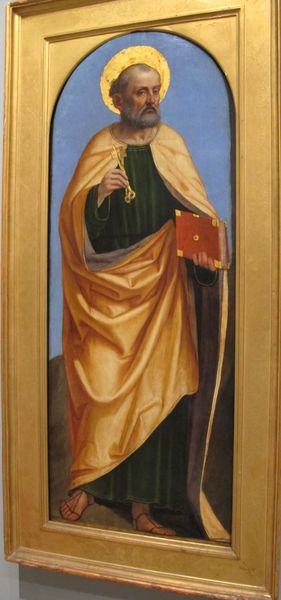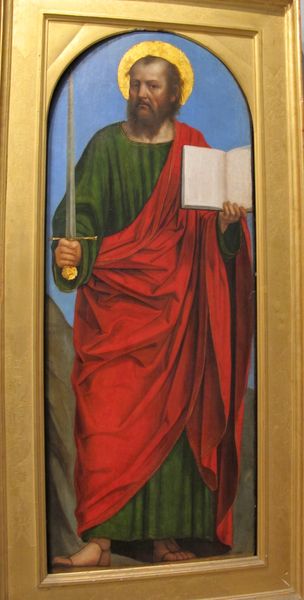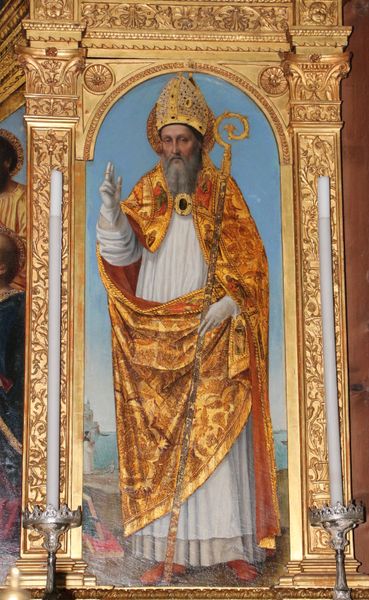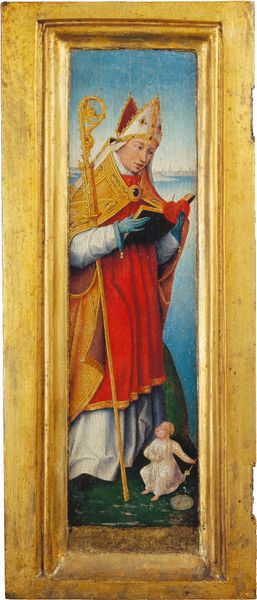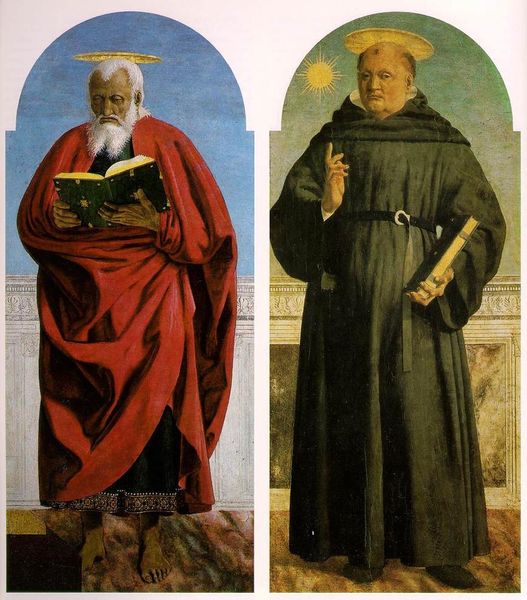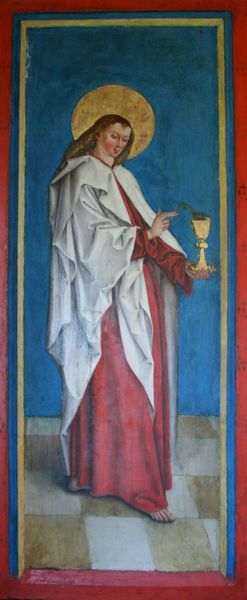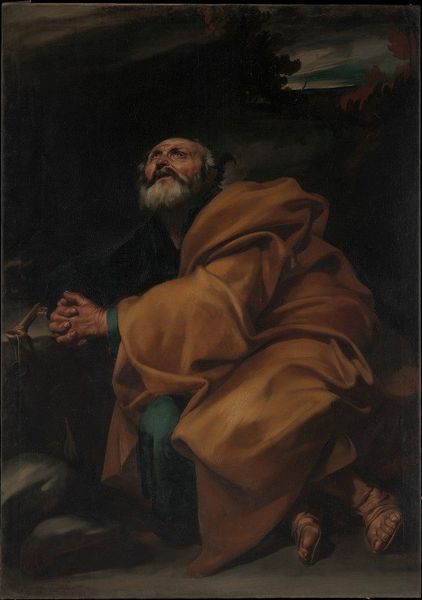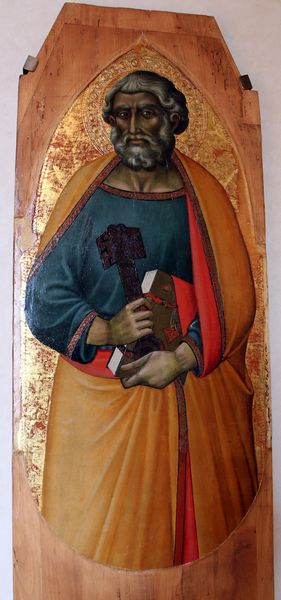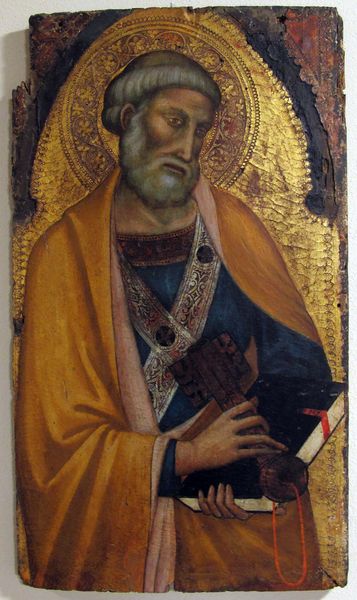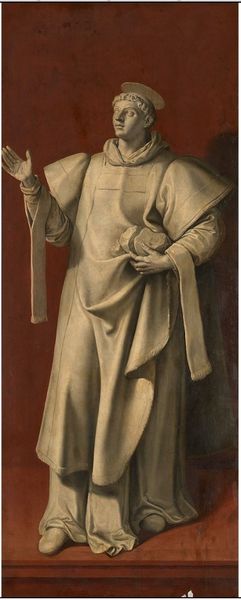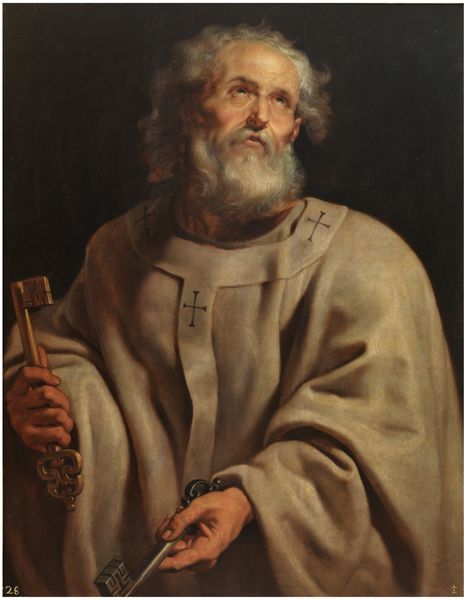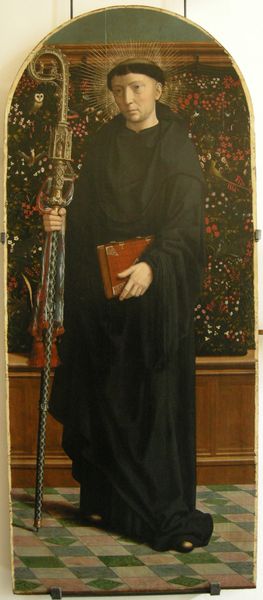
tempera, painting, oil-paint, fresco
#
portrait
#
tempera
#
painting
#
oil-paint
#
fresco
#
oil painting
#
history-painting
#
italian-renaissance
#
early-renaissance
#
portrait art
Copyright: Public domain
Editor: We're looking at "Saint Peter" by Francesco del Cossa, painted in 1473. It seems to be tempera and oil on panel. The monumental figure really strikes me. What do you see in this piece? Curator: I see a powerful assertion of Papal authority rendered during a time of significant political and religious tension. Cossa painted this during the Early Renaissance, and we must consider the rising power of the Papacy as a patron and ideological force. Notice how Saint Peter holds the keys – symbols of his power to open or close the gates of Heaven – not passively, but with a visible grip. Editor: So the keys aren't just symbolic, they're about power? Curator: Precisely. The positioning within Palazzo Brera further reinforces this; art wasn’t just art then; it served didactic and propagandistic functions. The fragmented Roman ruins in the background hint at the Church's triumph over classical paganism. What does the positioning and perspective of St. Peter himself suggest to you? Editor: He's central, imposing almost… the lines all draw your eyes toward him. The gold leaf halo adds to that effect. Is it making a statement about the central role of the Church? Curator: Absolutely! The use of oil paints in combination with tempera allowed for both sharp detail and luminosity, enhancing the richness that wealthy patrons appreciated while further glorifying the divine subject. This glorification reinforced their ties to spiritual power. Editor: That makes a lot of sense. I hadn't thought about the patron's influence so directly, or how location affects the viewing of the work! Curator: Examining art through a historical lens often reveals those unspoken narratives. Hopefully it will continue to deepen your understanding!
Comments
No comments
Be the first to comment and join the conversation on the ultimate creative platform.
